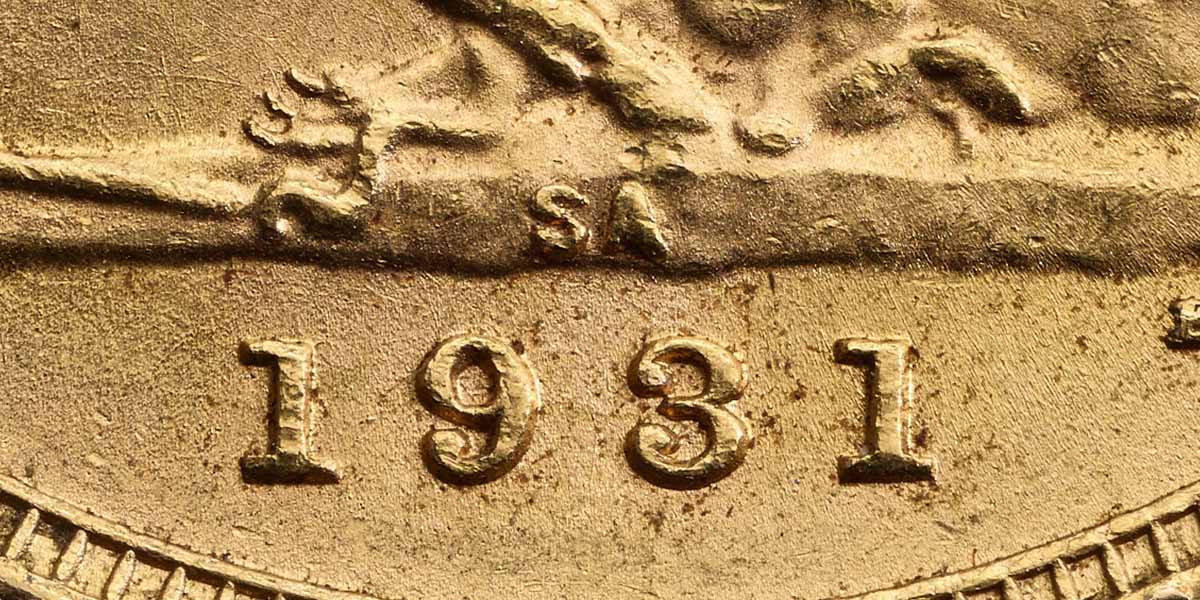In 1931, the United Kingdom abandoned the gold standard and the following year, The Royal Mint stopped producing circulating Sovereigns.
In 1717, Sir Isaac Newton, as Master of the Mint, set up a new mint
ratio that dramatically reduced the amount of silver in circulation.
This act was followed by the issue of the new gold Sovereign in 1817, which featured a design depicting St George and the dragon that has
since become synonymous with the coin.

These factors led to the establishment of the world’s first formal gold specie standard in 1821, in which the monetary unit was tied to the value of circulating gold coins. Following the United Kingdom’s adoption of the gold standard, several other countries began to follow suit – Canada in 1853 and then Newfoundland in 1865. The United States established its own standard in 1873, using the eagle as its unit, whilst Germany followed the US’s lead in the same year with the introduction of the gold mark.
For years, the gold standard was successful in providing a way for countries to keep their exchange rates stable and encourage the growth of international trade. However, the onset of the First World War put the system under great strain, as high levels of inflation drove the value of paper money down well below the value of gold.
Confidence in the gold standard began to wane, though many countries continued to back it, with the UK Government reaffirming its commitment in 1926. However, the Wall Street crash in October 1929 sent the global economy into meltdown and finished the standard off as a way to maintain the value of a currency.

The Gold Standard Abandoned
In a bid to stabilise the precarious economic situation, in which the devaluation for the pound became inevitable, the UK Government hastily abandoned its adherence to the gold standard in 1931. Sir Robert Johnson, Deputy Master of The Royal Mint, declared, ‘as far as the Mint is concerned gold coinage as currency is forever dead’, and the following year signalled the end of The Sovereign as a circulating coin.
The branch mint in Pretoria, South Africa, was the last to strike Sovereigns after all others had ceased production. This was primarily due to South Africa – the world’s most prolific gold producer at the time – remaining on the gold standard after the UK and Australia had both abandoned it. However, the South African economy greatly suffered and ceased its adherence to gold on 27 December 1932.
South African Sovereigns
In 1923, during the height of the gold standard, The Royal Mint established the last of its overseas branches in Pretoria with the aim of turning locally mined gold into coinage. Striking began in 1923, producing both the distinctive national coinage of South Africa and Imperial Sovereigns that displayed the small ‘SA’ mint mark to denote that they were struck at Pretoria. The facility reached its peak of production in 1928, striking just over 18 million coins that year.
Struck in 22 carat gold, the 1931 Sovereign represents the penultimate edition of the coin produced for circulation. The reverse features the ‘SA’ mint mark beneath Benedetto Pistrucci’s inimitable portrayal of St George and the dragon, whilst the coinage portrait of George V by Australian sculptor Bertram Mackennal adorns the obverse of the coin.
Specification
| Specification | Value |
|---|---|
| Denomination | Sovereign |
| Alloy | 22 Carat Gold |
| Weight | 7.98 g |
| Diameter | 22.05mm |
| Reverse Designer | Benedetto Pistrucci |
| Specification | Value |
|---|---|
| Obverse Designer | Bertram Mackennal |
| Quality | Circulating |
| Year | 1931 |
| Pure Metal Type | Gold |
